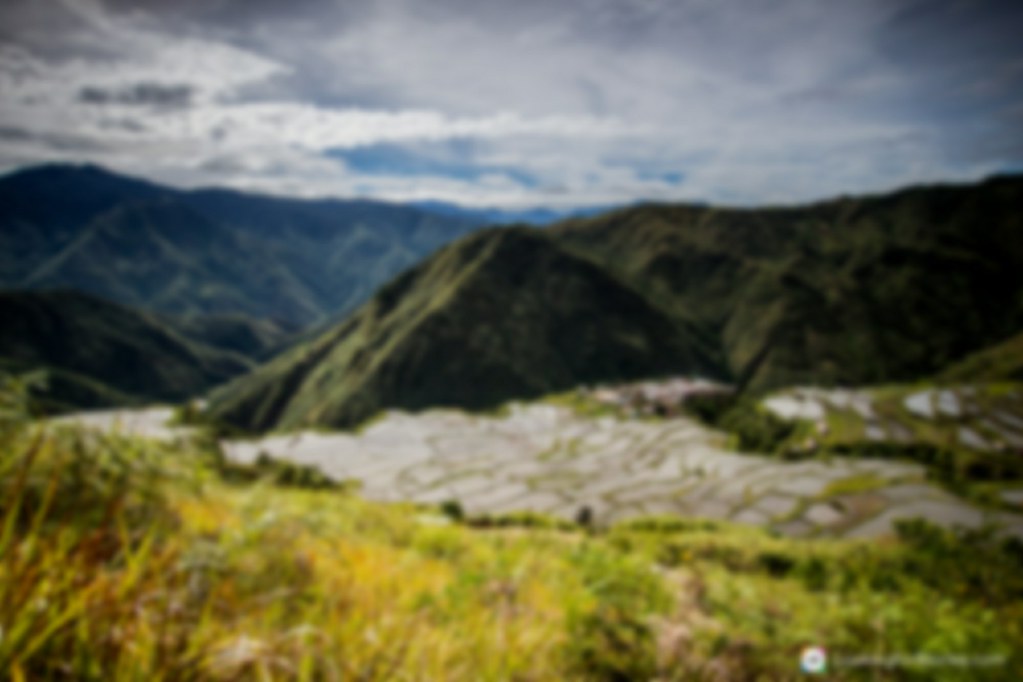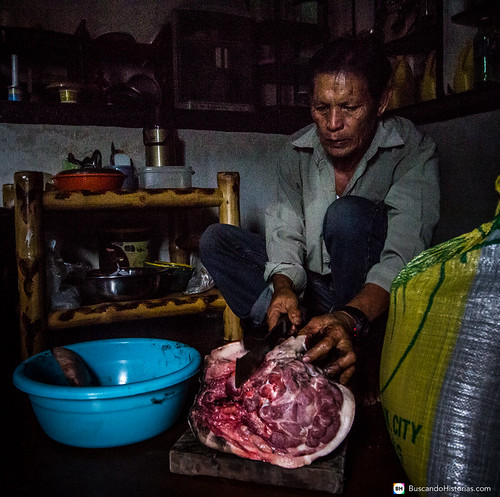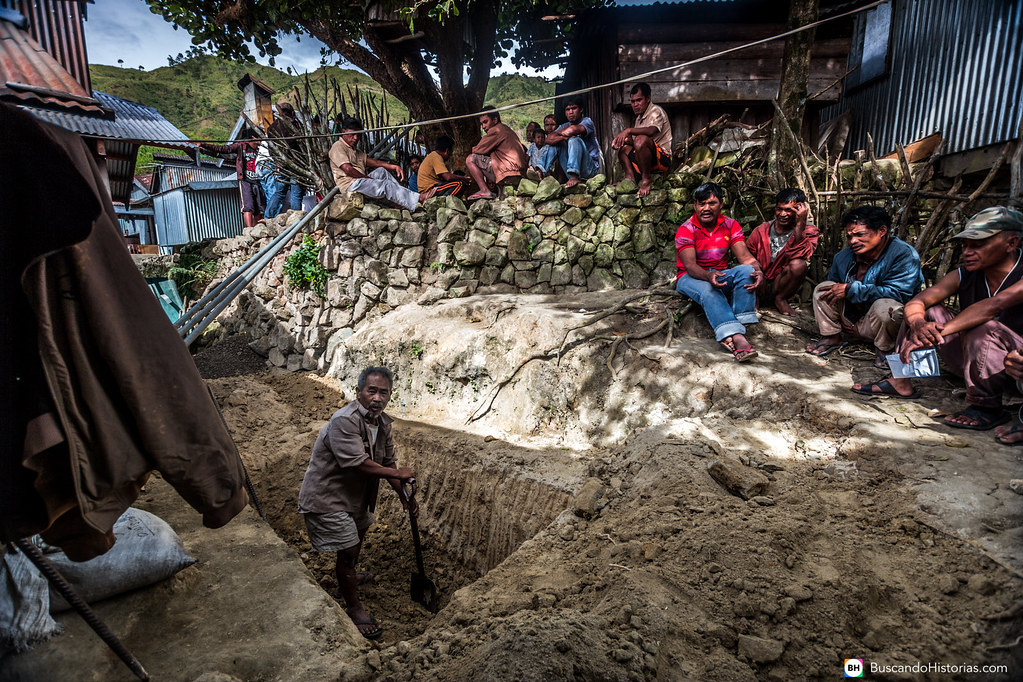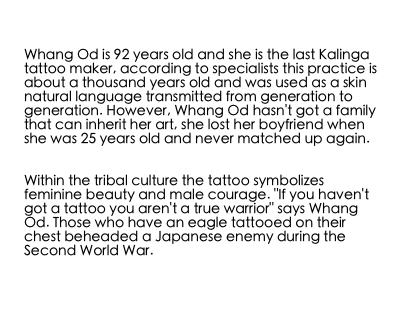
Whang Od: The Kalinga Tattoo maker
according to specialists this practice is about a thousand years old
and was used as a skin natural language transmitted from generation
to generation

Full story with more videos and photos:

Buscalan is a hidden village in a mountain of the Luzon
island and the only way to arrive to this town of the Kalinga
province is walking an hour through treacherous tracks.
If it wasn’t so hidden, it would probably be a hotbed for
tourists and not only because of the location. Its valleys and
irrigated rice plantations are spectacular, but are also very
similar to those you can find in other towns accessible by
public transport in the nearby mountains.


Tourists prefer to surpass these obstacles to reach Buscalan
in order to meet Whang Od, the tattoo maker, one of the oldest
ladies in the tribe and who became famous after appearing on
a National Geographic report but also becouse the day she dies,
a big part of her tribe’s culture dies away as well.










Whang Od is 92 years old and she is the last Kalinga tattoo maker,
according to specialists this practice is about a thousand years old
and was used as a skin natural language transmitted from generation
to generation. However, Whang Od hasn’t got a family that can inherit
her art, she lost her boyfriend when she was 25 years old and never
matched up again.


Within the tribal culture the tattoo symbolizes feminine beauty and
male courage. “If you haven’t got a tattoo you aren’t a true warrior”
says Whang Od. Those who have an eagle tattooed on their chest
beheaded a Japanese enemy during the Second World War.

“Before making a tattoo they showed the enemy’s head
and after celebrating their victory we made the tattoos
as an evidence of their authorship”.


The tattoo before was drawn only after war and victory.
It was a culture of exchange that did not require money.
Now, however, people have to pay for their tattoos as
they are required to start using money for things like
electricity or buying pigs and hens.


For years, the tattoo making tradition wasn’t giving much of
importance, in fact it was almost extinct until the first foreigners
arrived. Actually, it was a journalist who pointed out to Whang Od
that she should train her sister’s granddaughter as the next Kalinga
tattoo maker, despite the fact that the young woman studies
computing engineering at a university far away from Buscalan
like so many other young people.
Some kids try to learn by watching what she does, but Whang Od
says that the future artist must be from her family.


Buscalan villagers have put their shoulders to the wheel during
the last months in view of the business driven by foreigners.
The National Commission of Indigenous People has imposed
on visitors an environmental quota that is collected by locals.
Besides, Whang Od’s family has hung a sign on their house
door as an indication for lost tourists and she provides them
with food and lodging. The tattoos will come afterwards starting
at a price of 500 Philippine pesos.



Whang Od’s house is quite modest, although she is always
well dressed and one of the richest women in the tribe thanks
to the money from the tattoos.

Charlie Pan-Oy also hangs around her house. He is
one of the neighbors but he’s the one that pulls the
strings in Buscalan. He sells marihuana and makes
the most out of the visitors. His hut is far more luxurious
than Whang Od’s, it has a television with dvd and his
son can drink coffee with industrial pastry bought from
outside the village.


Whang Od house has two floors and is in the top,
into a room where there are many photographs of
the reporters who have reached Buscalan, where
guests sleep on the floor with mats.


Her sister lives in the next room while Whang Od
lives in the ground floor and rests in a corner between
the dining room and kitchen.



The Kalinga tattoos are no longer made according to tradition,
however the material for the tattoo is the same with which the
ancient tattooed warriors. Whang Od’s working material is a
coconut bowl to mix water, charcoal and the sweet potato that
will provide texture to the mix. She also uses a Calamansi twig
or Philippine lime and a nail made out of a thorn joined to a
bamboo stick.
Clients can choose where they want the tattoo but the design
is up to her, that or the possibility to choose from one of the
drawings in her arms.


“The eagle is for the warriors, not for tourists or any other
person that is not to be respected by our community”



However those who make a long way
to be tattooed by Whand Od, they feel
proud to carry on your skin the art of an
ancient culture that is very close to
disappearing in the tribe.


“Happiness to me is being able to live up to 100 years making tattoos.
I’m delighted of having people from all over the world coming to my
home to visit and get a tattoo from me; this gives meaning to my life”.


Acknowledgements
Maki
Eyal Arad
Dror Benyossef

This story is in English thanks
to The Tangible Dreams

For three days the body stays at home because they feel that,
in their culture, the person is still alive, and thus the villagers or
other neighboring villages have the opportunity to say their last
words to the deceased.

Some visitors come to the village after killing an animal to give as
a gift to the family. The burial is a party, drinking gin and the women
prepare food, and it’s rude not to try a bite.




After the funeral, as Christians who are buried, the body is put in
the hole that the villagers have dug using a wooden paddle.


Acknowledgements
Maki
Eyal Arad
Dror Benyossef

This story is in English thanks
to The Tangible Dreams







